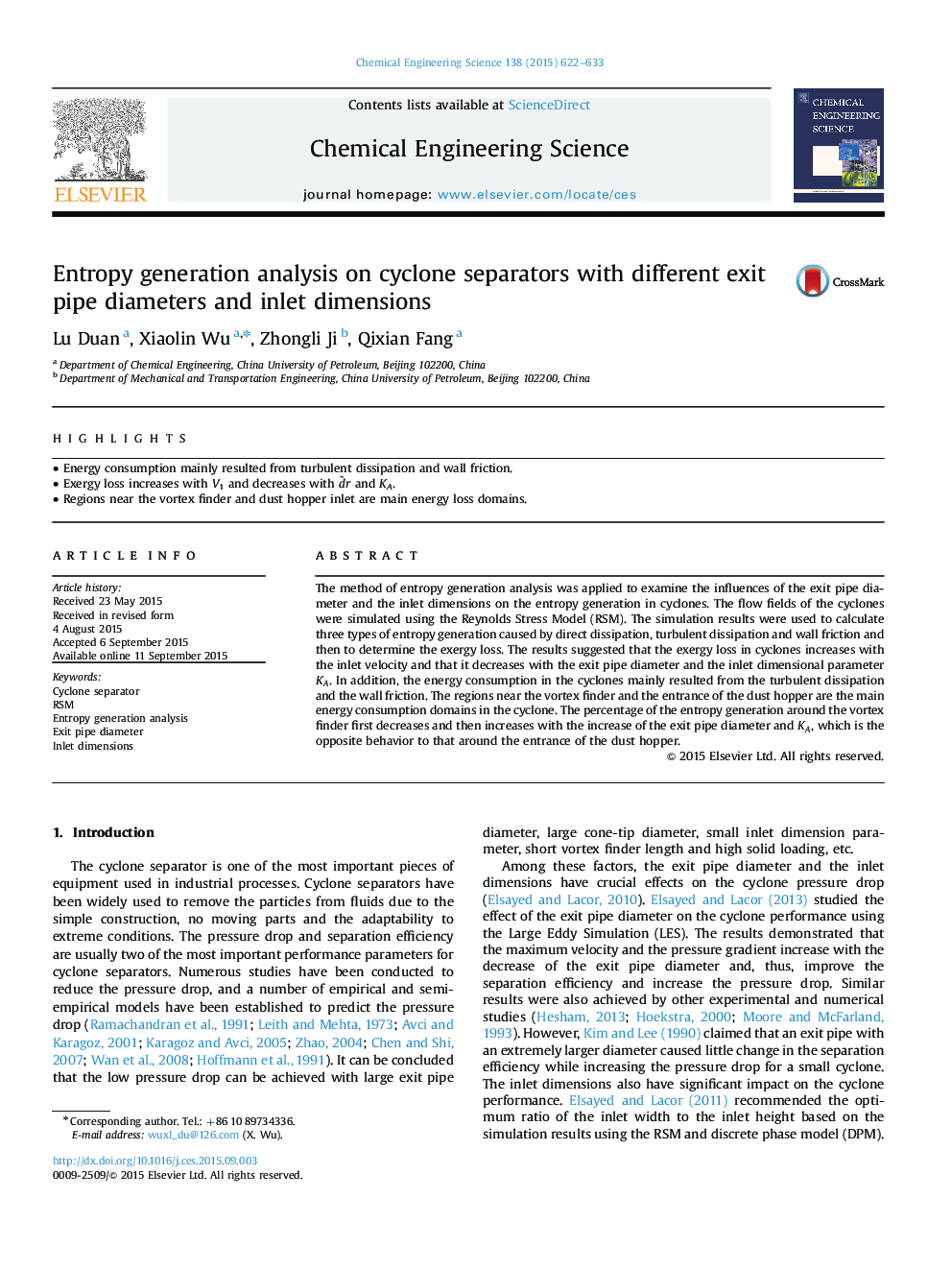| Article ID | Journal | Published Year | Pages | File Type |
|---|---|---|---|---|
| 154634 | Chemical Engineering Science | 2015 | 12 Pages |
•Energy consumption mainly resulted from turbulent dissipation and wall friction.•Exergy loss increases with V1 and decreases with d˜r and KA.•Regions near the vortex finder and dust hopper inlet are main energy loss domains.
The method of entropy generation analysis was applied to examine the influences of the exit pipe diameter and the inlet dimensions on the entropy generation in cyclones. The flow fields of the cyclones were simulated using the Reynolds Stress Model (RSM). The simulation results were used to calculate three types of entropy generation caused by direct dissipation, turbulent dissipation and wall friction and then to determine the exergy loss. The results suggested that the exergy loss in cyclones increases with the inlet velocity and that it decreases with the exit pipe diameter and the inlet dimensional parameter KAKA. In addition, the energy consumption in the cyclones mainly resulted from the turbulent dissipation and the wall friction. The regions near the vortex finder and the entrance of the dust hopper are the main energy consumption domains in the cyclone. The percentage of the entropy generation around the vortex finder first decreases and then increases with the increase of the exit pipe diameter and KAKA, which is the opposite behavior to that around the entrance of the dust hopper.
